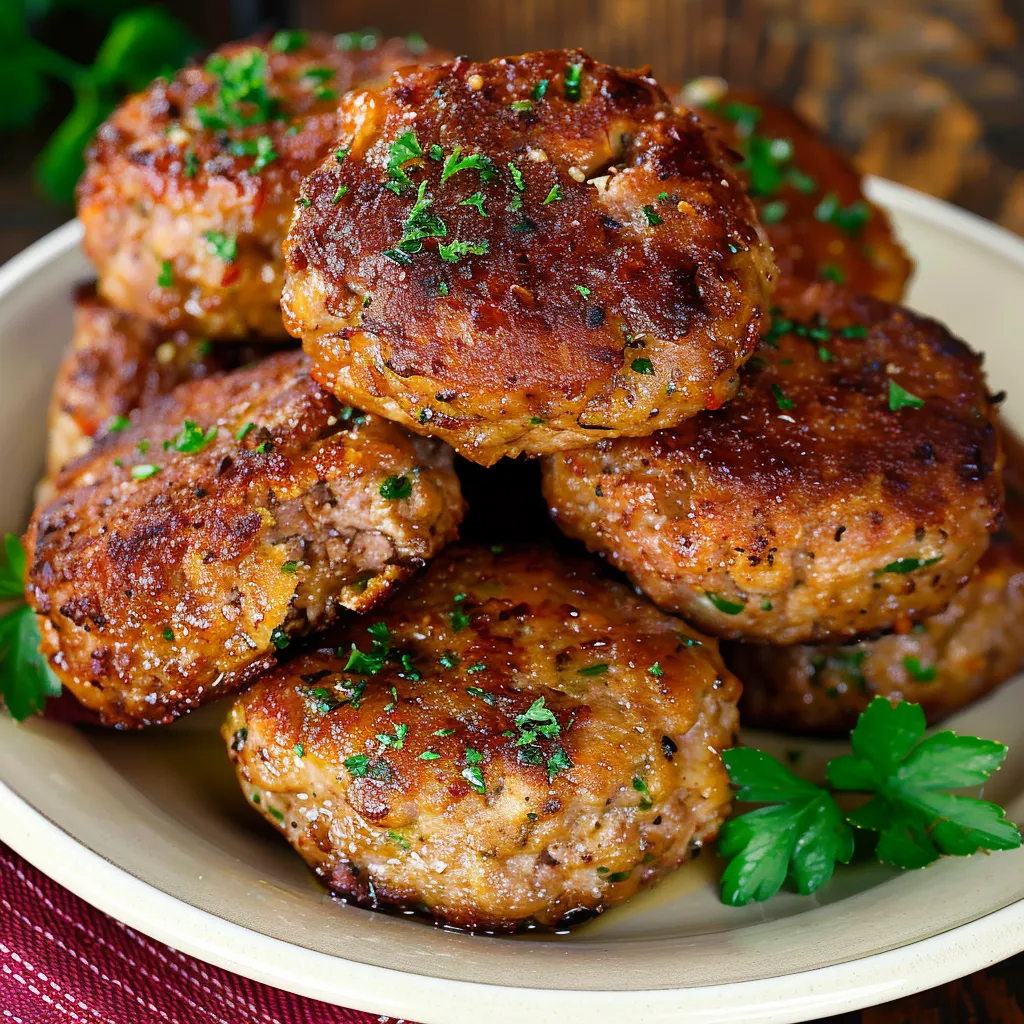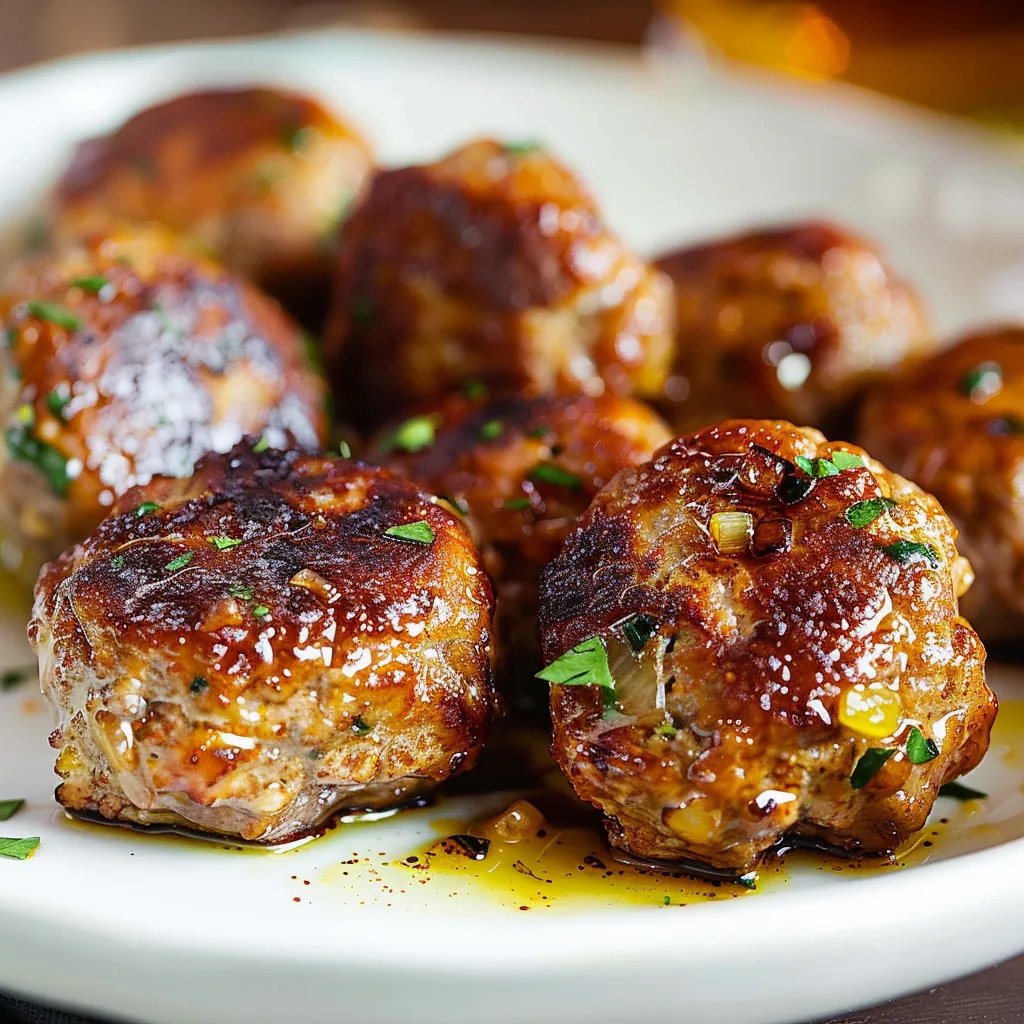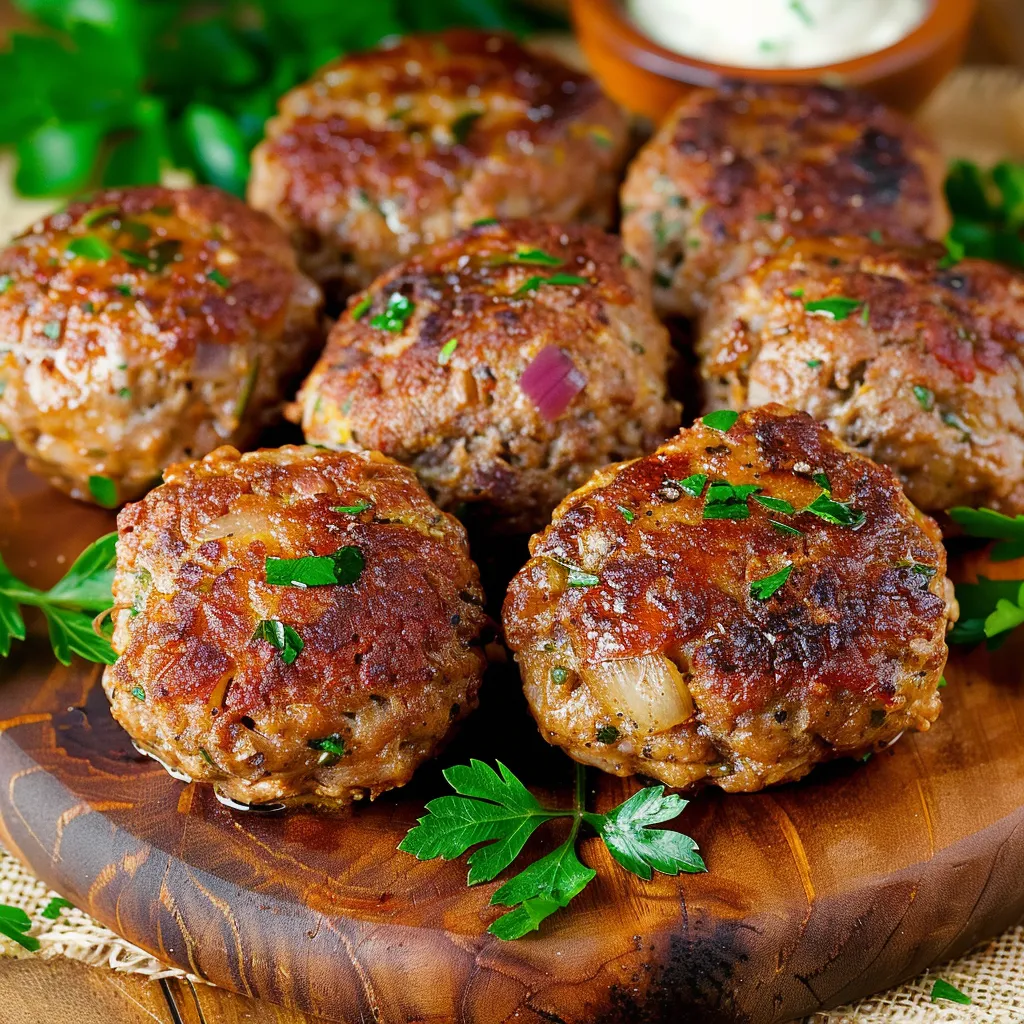 Pin it
Pin it
German meat patties, known as Frikadellen, bring genuine German home cooking straight to your dinner table. These filling oval-shaped treats stand out from typical hamburgers thanks to their unique form and deep, intricate flavors built up through many generations of family cooking in Germany. Every mouthful offers a flawless mix of soft meat, fragrant herbs, and gentle spices that come together for an undeniably comforting food moment.
I came across this recipe while exploring Bavaria, where a small inn owner let me in on her family's hundred-year-old method. After trying again and again to match that ideal softness and taste, I finally got the hang of the real approach that keeps folks coming back to her restaurant every single year.
Key Ingredients and Shopping Advice
- Ground Meat Mix: Go for meat that's at least 20% fat to keep things juicy. A combo of 70% beef and 30% pork gives you the best taste and moisture.
- Bread From Yesterday: Don't even think about using fresh bread - it won't soak up milk right. Sourdough that's a day old works really well.
- Yellow Onions: Look for ones that feel solid and heavy to create a tasty base that goes great with the meat.
- Fresh Parsley: The flat-leaf kind adds bright flavors that cut through the meaty richness.
 Pin it
Pin it
Step-by-Step Cooking Guide
- Bread Preparation:
- Tear up day-old bread and let it soak in warm milk for 10 minutes, then squeeze it gently until extra milk comes out and it looks like paste.
- Meat Mixture Assembly:
- Put ground meat, the soaked bread, tiny cut onions, parsley, an egg, and spices together. Mix with your hands but don't overdo it so it stays fluffy.
- Patty Formation:
- Make oval patties about 3/4 inch thick. Push the middle in slightly so they don't bubble up while cooking.
- Perfect Frying Technique:
- Heat up butter or oil in a pan on medium heat. Cook patties 4-5 minutes on each side until they turn golden brown all the way through.
- Resting and Serving:
- Let them sit for 5-7 minutes before you serve them so all the juices can spread back out.
When I was little, my grandma would always keep some raw mixture in the fridge for an hour - she always said this extra time made them taste better. After making Frikadellen for many years now, I can tell you she wasn't wrong.
Mastering Heat Control
Keeping your pan at the right temperature helps brown them evenly and stops the edges from getting dry. Turn the heat down a bit if you hear too much sizzling. Being patient and watching your heat really makes these patties turn out great.
Plan-Ahead Options
Frikadellen actually taste better when you make them a day early. Keep them covered in your fridge and warm them up slowly in a pan with the lid on and a little splash of broth to keep them moist.
Traditional Pairings
Try Frikadellen with classic German potato salad and some pickled red cabbage. For something more casual, cut them thin and put them on crusty bread rolls with strong mustard for a really good sandwich.
I first learned about Frikadellen in my grandma's kitchen, where she showed me that taking your time and paying attention to little details really matters. These aren't just meat patties - they connect you to many generations of German cooking, giving you warmth and comfort in every bite.
 Pin it
Pin it
Frequently Asked Questions
- → What is the difference between Frikadellen and regular hamburgers?
- Frikadellen pack more flavor than regular hamburgers and mix in bread soaked with milk, herbs, and spices. They're usually oval instead of round and taste good whether they're hot or cold.
- → Can I make Frikadellen ahead of time?
- Sure thing! Frikadellen work well made in advance. They're tasty cold and will keep in your fridge for up to 3 days.
- → What sides go well with Frikadellen?
- Try serving them with German potato salad, creamy mashed potatoes, fresh crusty bread, or a nice mixed salad. They also make great sandwiches with a bit of mustard.
- → Can I freeze uncooked Frikadellen?
- Absolutely, you can freeze the shaped raw Frikadellen for up to 3 months. Just put some parchment paper between them before you freeze them.
- → Why do you soak bread in milk for Frikadellen?
- The milk-soaked bread helps your Frikadellen stay juicy and soft while cooking, so they don't turn out tough or dry.
